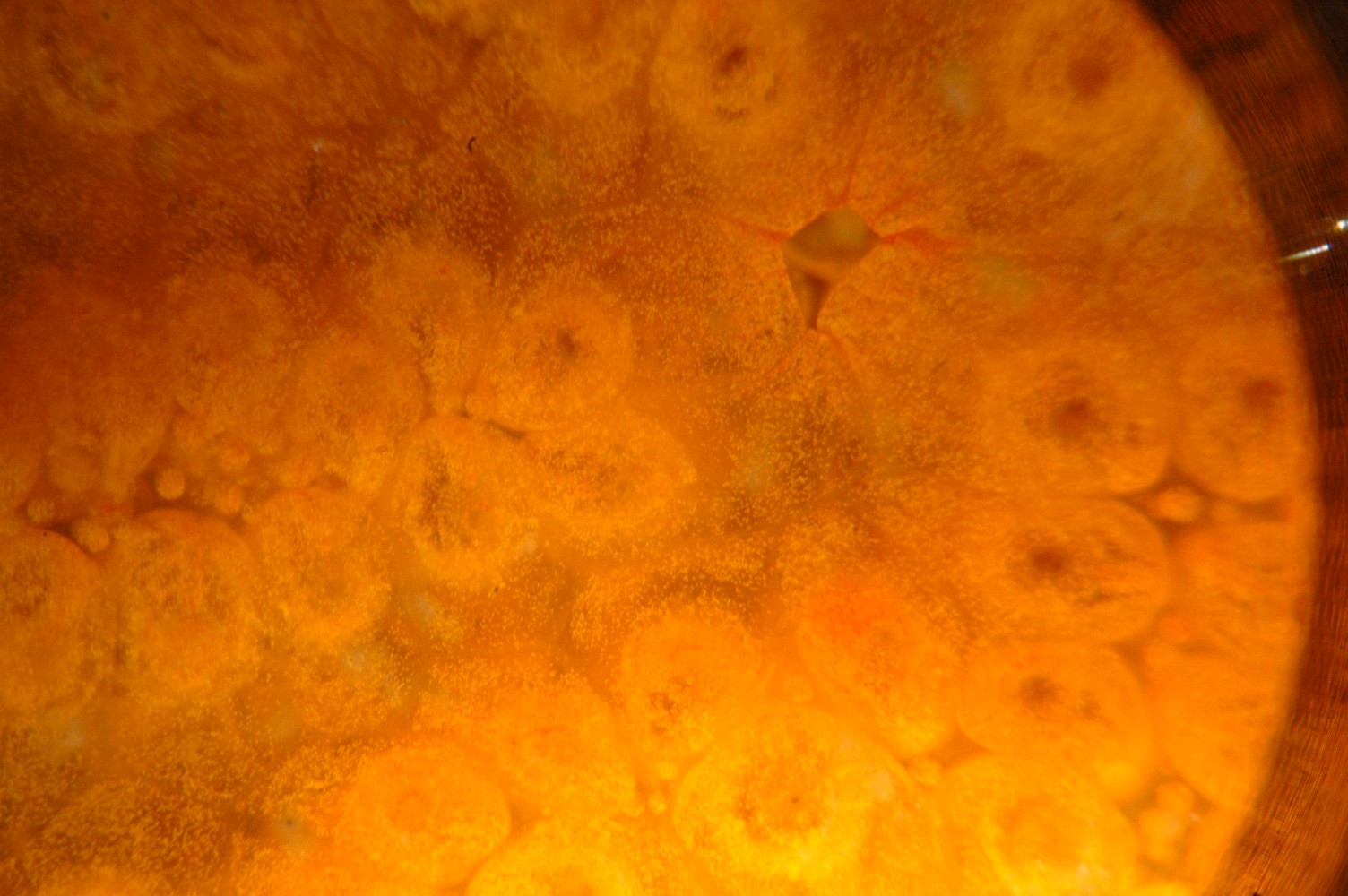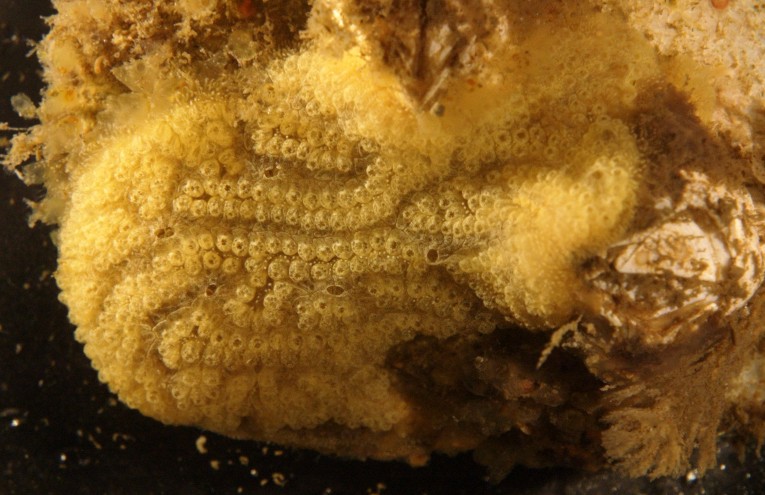Aplidium californicum (Ritter & Forsyth, 1917)Common name(s): California sea pork, sea pork |
|
| Synonyms: Amaroucium californicum |  |
|
Phylum Chordata
Subphylum Urochordata
Order Enterogona
Suborder Aplousobranchia
Family Polyclinidae
|
|
| Photomicrograph of Aplidium californicum, found on dock at Fidalgo Marina. The buccal siphons of many individual zooids can be seen scattered across the surface. At the top right is the common opening to the atrial siphons of several local zooids. | |
| (Photo by: Dave Cowles, July 2009 ) | |
How to Distinguish from Similar Species:Aplidium solidum has 12-16 rows of stigmata, forms slabs up to 5 cm thick, and is usually red or orange-brown.
Geographical Range: Alaska to Baja California Mexico; Galapagos Islands
Depth Range: Intertidal to 85 m
Habitat: A variety of solid or semi-solid substrates, such as docks, tubeworm tubes, crab carapaces, shells, surge channels. Usually in areas protected from direct surf. One of the commonest compound tunicates in semi-protected sites.
Biology/Natural History:
Predators of this compound ascidian include the seastars Dermasterias
imbricata,Asterina
miniata, Mediaster
aequalis, and Pteraster
tesselatus.
If this tunicate is cut open the individual zooids
are clearly visible inside. The front portion (thorax) of
each contains
the pharyngeal
basket and atrial
aperture. The middle (abdomen) contains the coiled
gut and esophagus.
The posterior (postabdomen) looks like a long tail and has the ovaries
(yellow), testes (white), and heart.
This species broods its eggs a few at a time, in the atrial cavity dorsal to the pharynx. The tadpole larvae swim out the atrial aperture to disperse. During asexual reproduction, the postabdomen detaches from the body and constricts into a linear series of buds, each of which grows up into a complete new zooid. The colonies may degenerate during the winter months.
The symbiotic amphipod Polycheria
osborni may be found living in grooves on these
colonies.
The parasitic copepod Pholeterides
furtiva may be found as well.
| Return to: | |||
| Main Page | Alphabetic Index | Systematic Index | Glossary |
References:
Dichotomous Keys:Carlton, 2007
Kozloff, 1987, 1996
General References:
Harbo,
1999
Johnson
and Snook, 1955 (as Amaroucium
californicum)
Lamb
and Hanby, 2005
Morris
et al., 1980
Niesen,
1994
Niesen,
1997
O'Clair
and O'Clair, 1998
Ricketts
et al., 1985
Scientific Articles:
Web sites:
General Notes and
Observations: Locations,
abundances, unusual behaviors:
This compound tunicate is especially common on the shaded docks of
Fidalgo Marina.

Another colony from Fidalgo Marina docks, 2012
Click HERE for a movie showing a closeup of many buccal siphons and a joint cloacal siphon of a colony, with particles showing the current blowing out of the cloacal siphon.
Authors and Editors of Page:
Dave Cowles (2009): Created original page
CSS coding for page developed by Jonathan Cowles (2007)